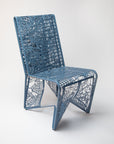
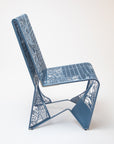
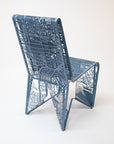
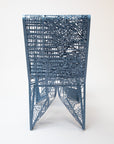
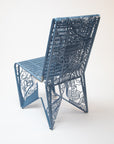
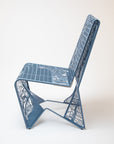
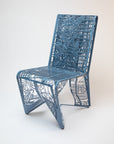
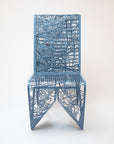
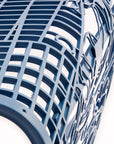
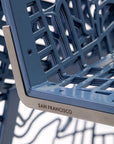
Aluminum Chair, San Francisco - Designer Series
If you select custom color, a designer will reach out to work with you. You can browse more color options here.
Model shown in Pigeon Blue.
The Atlas Obscured Collection Aluminum Chair consists of four layers of laser-cut maps. The aluminum frames and layers are meticulously heated and hand bent over steel forms to achieve a consistent geometry. The chair is then powder-coated and reinforced with machined stainless-steel brackets.
Material: Aluminum
Dimensions: 25¼in L x 18in W x 36¾in H
Weight: 15.8lbs
Map Scale: 1in = 500ft
Lead Time: Up to 2 Months
Designer Series Aluminum Chairs are made to order utilizing thoughtfully curated maps and narratives. Each piece is made with intention and care. As such, production timelines may be subject to minor adjustments in rare cases. Please allow additional time for shipping.
Made From Four Layers of Historical Maps
OCCUPYING OVER 170 YEARS OF SAN FRANCISCO HISTORY
Top Layer
2024
San Francisco faces a complex mix of political, economic, and social challenges and developments. The city elects Daniel Lurie, a centrist billionaire philanthropist, as mayor, defeating incumbent London Breed, signaling a shift in leadership. Economically, San Francisco grapples with high living costs and housing affordability while maintaining its status as a global tech hub. The city continues to benefit from the booming tech industry but struggles with the pressures of its growing population.
Culturally, San Francisco remains a vibrant hub, hosting events like the San Francisco Folk Festival in July, drawing thousands of visitors. Infrastructure also sees significant improvements, such as the completion of the Golden Gate Bridge safety net, which reduces suicides.
Socially, the city remains diverse and active in addressing challenges like homelessness while pursuing long-term solutions to housing and affordability.
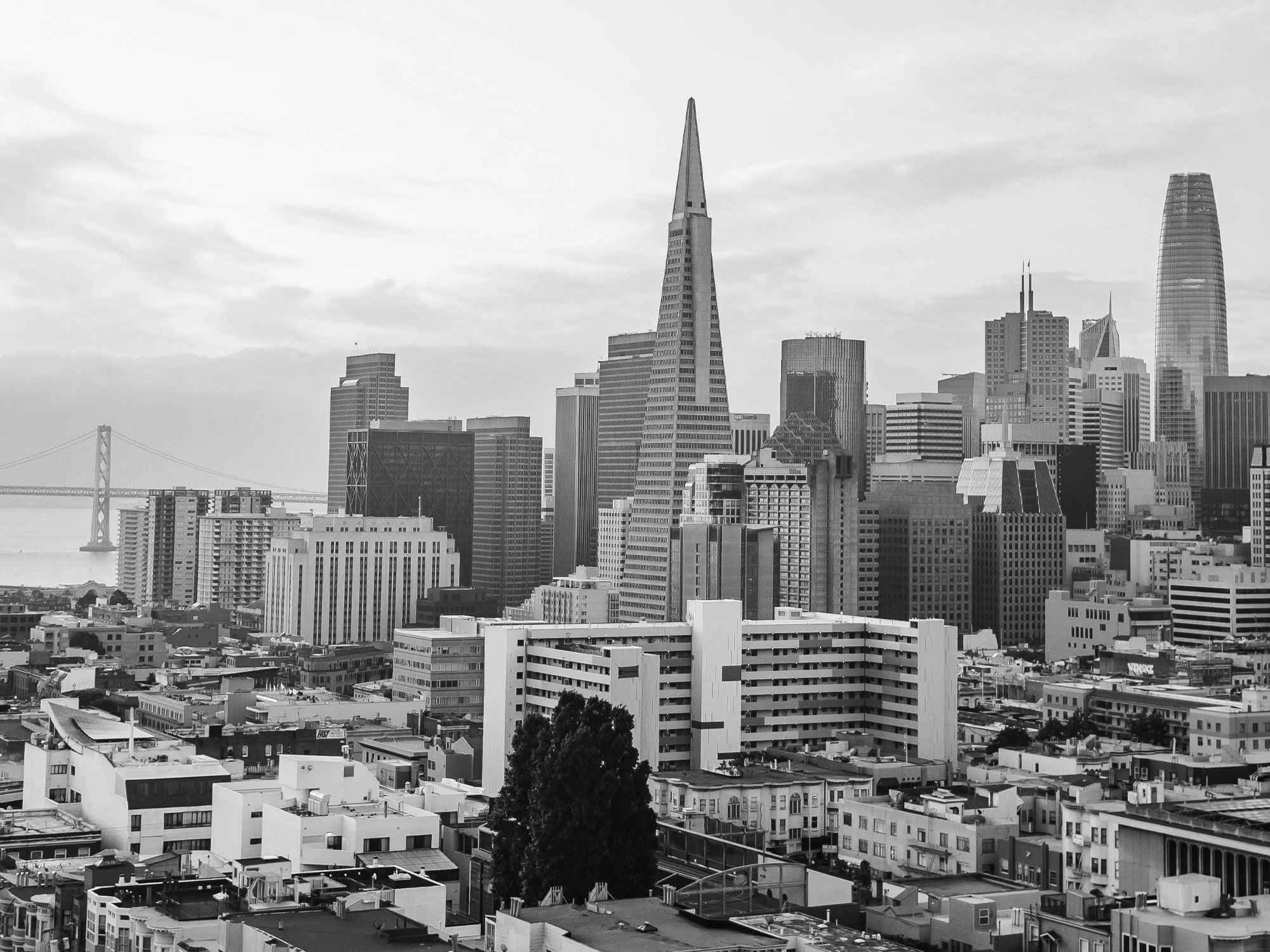
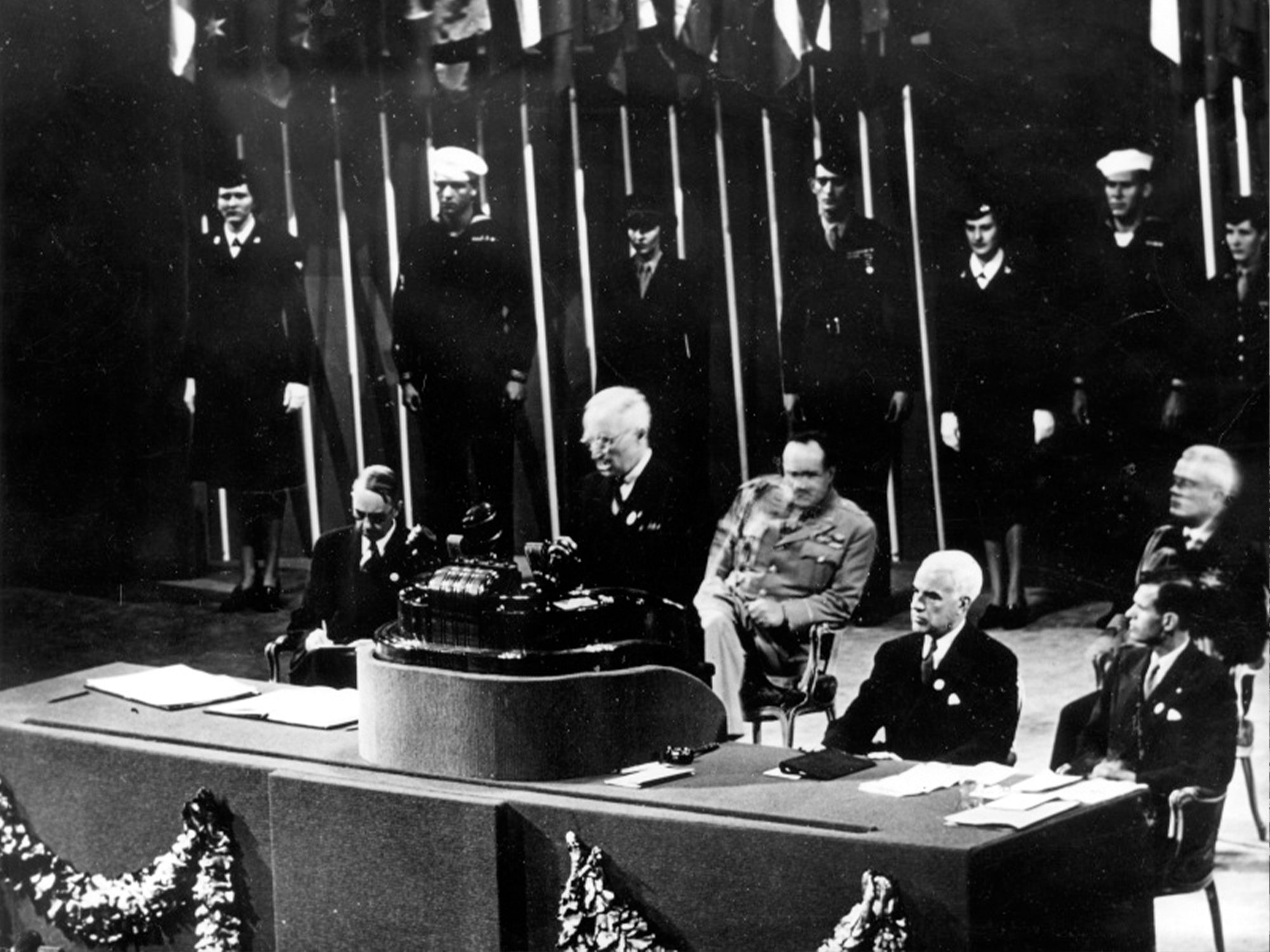
Second Layer
1945
San Francisco plays a pivotal role in shaping the post-World War II world by hosting the San Francisco Conference, where the United Nations Charter is drafted. Delegates from 50 countries gather at the War Memorial and Performing Arts Center to discuss international cooperation, marking a historic moment in global diplomacy.
The city, having played a critical role in the Pacific theater during the war, sees economic growth as military industries transition to peacetime production. San Francisco's population grows as returning soldiers and immigrants add to its diversity, further shaping its cultural landscape. The arts flourish during this period, reflecting the optimism of the post-war era. Social change also takes place, with the city embracing new cultural movements.
San Francisco’s role in shaping a more interconnected world is recognized, cementing its importance in global history.
Third Layer
1906
San Francisco is devastated by a catastrophic earthquake with a magnitude of 7.9, followed by widespread fires that destroy 80% of the city. The earthquake, which strikes on April 18, results in an estimated 3,000 deaths and immense infrastructure damage. Thousands are left homeless, and the city's economy, reliant on trade, industry, and maritime commerce, is disrupted.
With efforts to rebuild quickly, modernized buildings and improved earthquake-resistant structures become part of the city’s recovery. The disaster also drives advancements in seismology and engineering, laying the foundation for future safety measures.
The city’s cultural scene, deeply impacted by the tragedy, reflects themes of resilience, with the arts, music, and literature capturing the city's struggle and recovery.
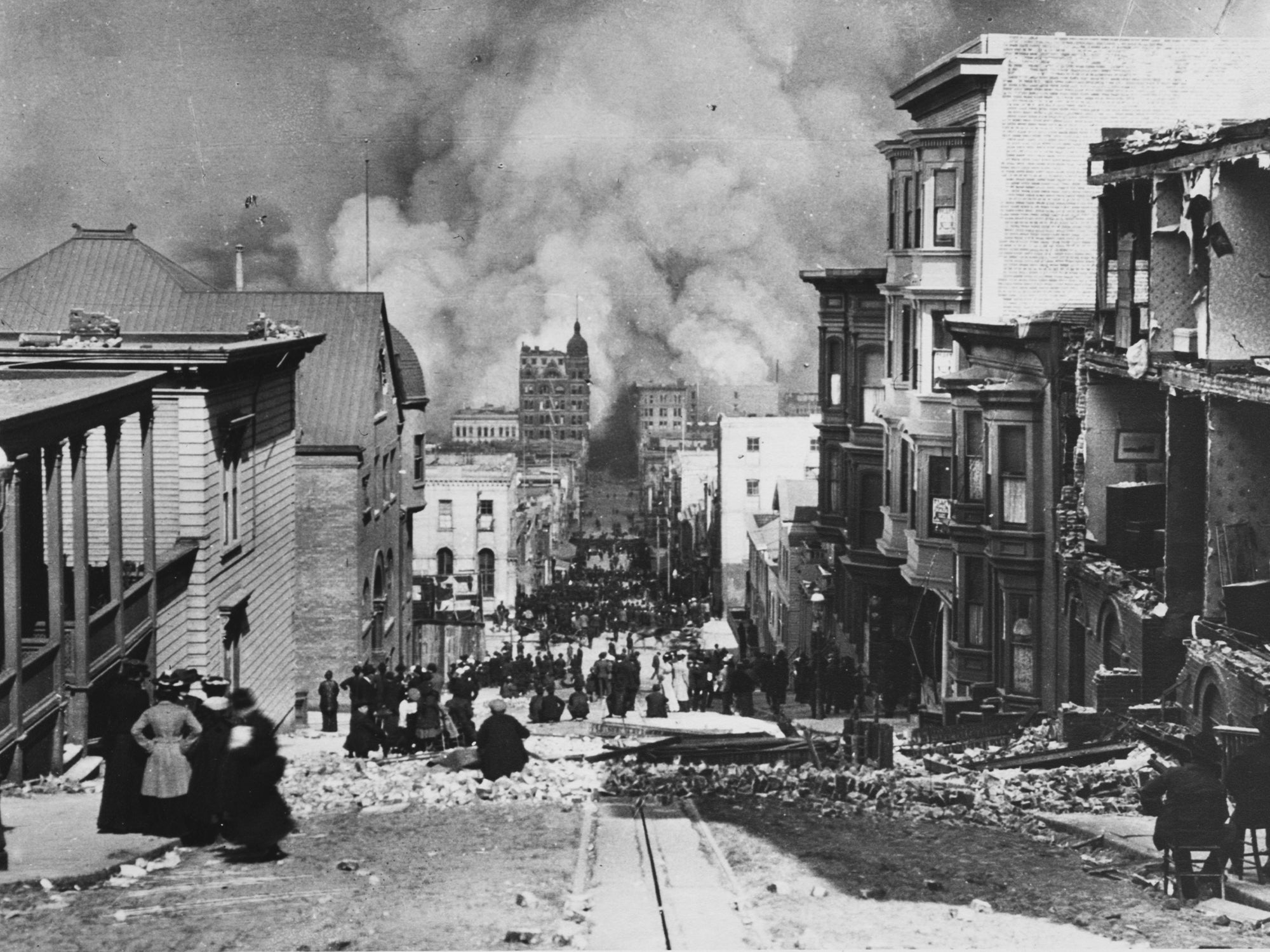
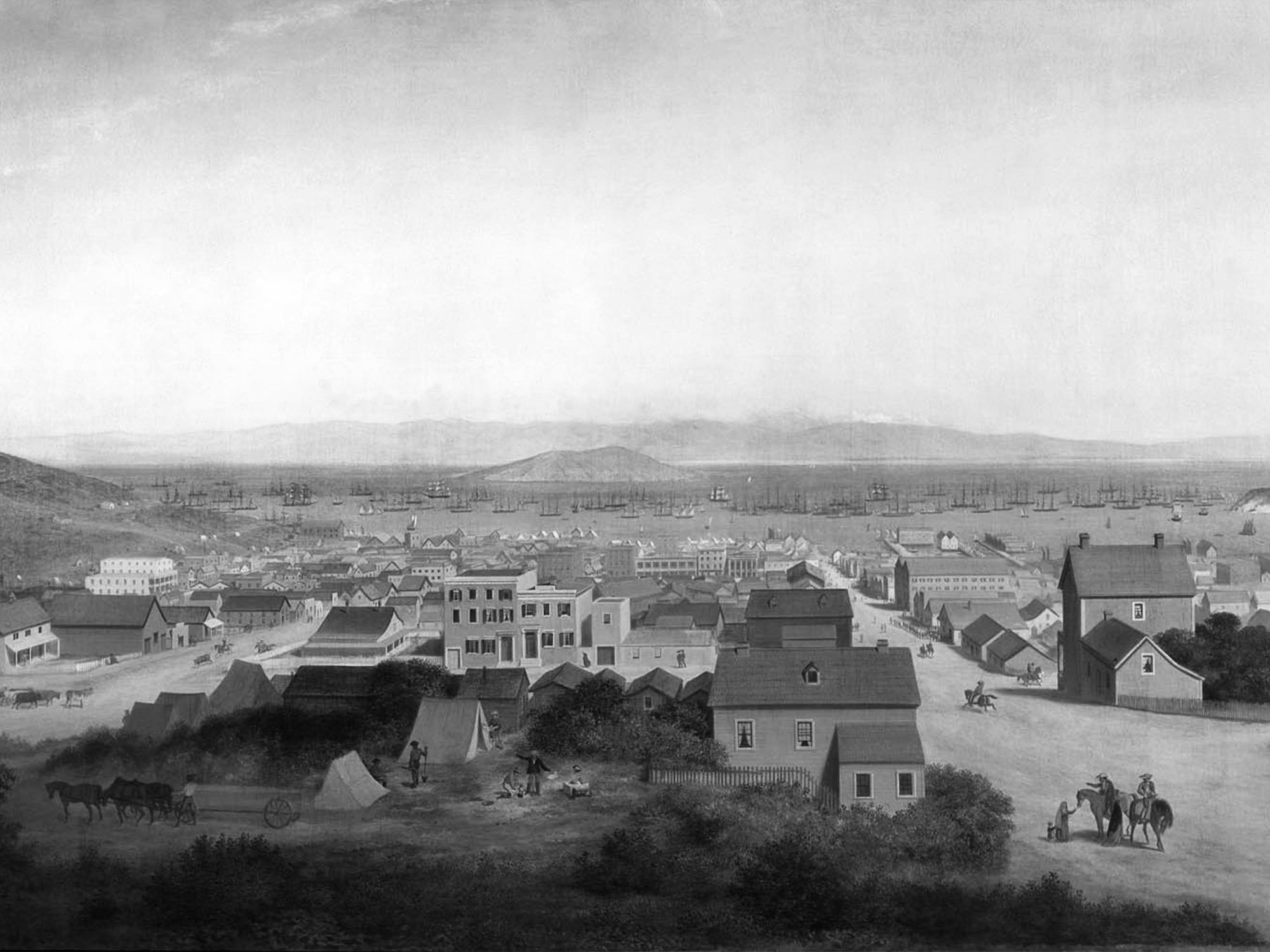
Bottom Layer
1850
San Francisco experiences a dramatic transformation, emerging as a bustling frontier city following the California Gold Rush. The influx of miners, entrepreneurs, and settlers leads to a population explosion, and California becomes the 31st state. The city quickly evolves from a small settlement into a major port, with a booming economy driven by the gold rush and trade.
As a result of rapid growth, the city faces overcrowded conditions, lawlessness, and a burgeoning informal economy. The infrastructure struggles to meet the demands of the population, causing significant challenges.
Despite this, the cultural landscape begins to flourish, shaped by the diverse influences of newcomers. The arts and literature start to reflect the unique blend of cultures, while San Francisco’s growing industrial development lays the groundwork for its future.
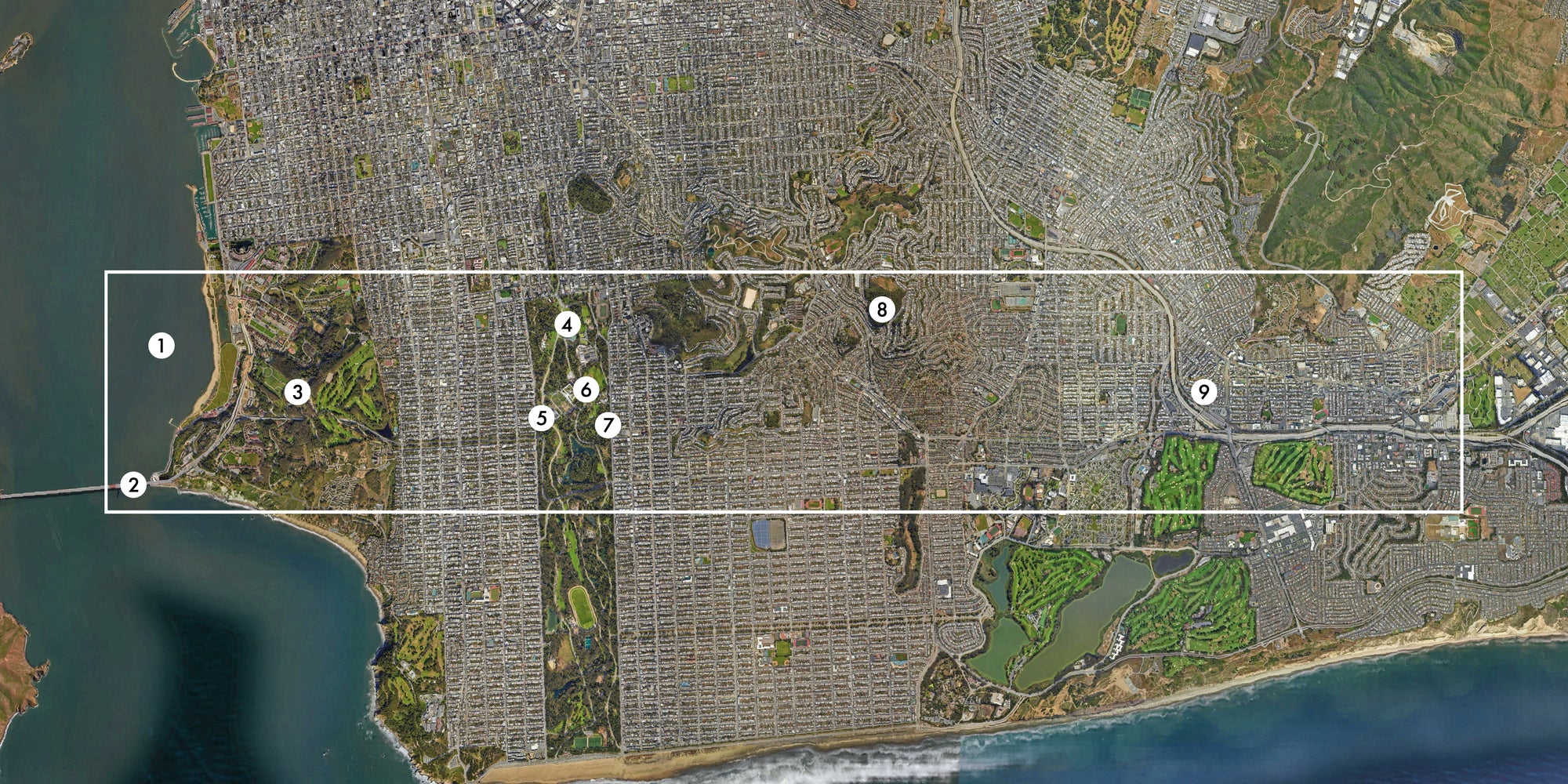
MAP LOCATION
1. San Francisco Bay
2. Golden Gate Bridge
3. Presidio of San Francisco
4. Golden Gate Park
5. de Young Museum
6. California Academy of Sciences
7. San Francisco Botanical Garden
8. Mount Davidson
9. San Francisco Border












